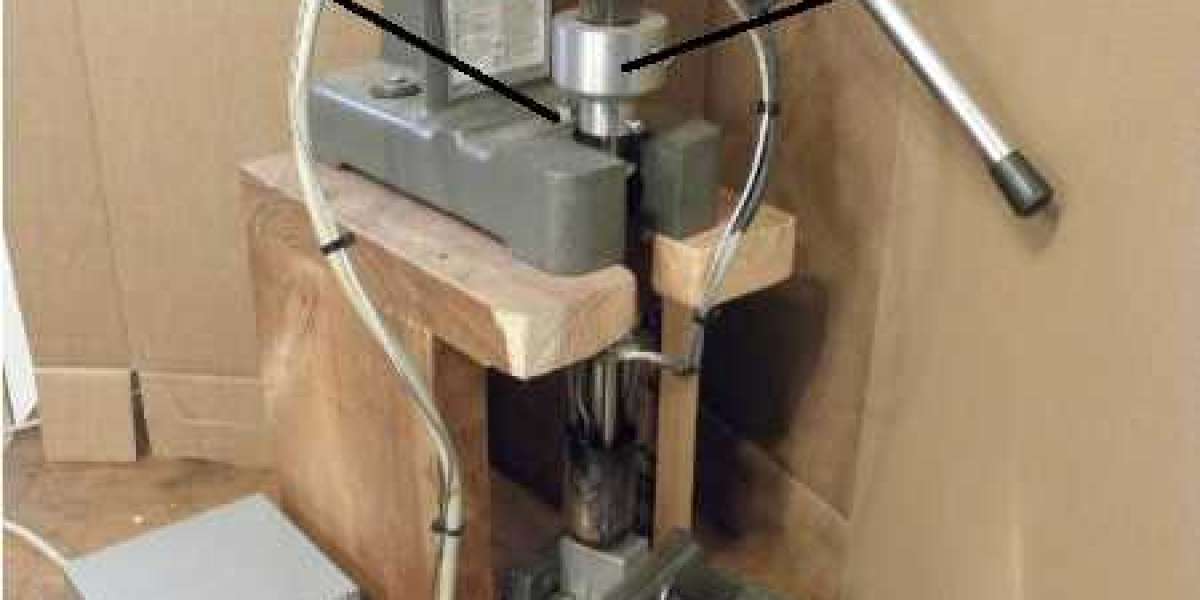In today’s world of manufacturing and prototyping, injection molding plays a critical role in producing complex parts and products, from household items to high-tech components used in various industries. While industrial-scale injection molding can be expensive and requires significant investment, DIY injection molding machine are growing in popularity among hobbyists, small-scale manufacturers, and engineers. These machines offer an affordable and customizable solution for creating high-quality plastic parts in small batches.
For those interested in producing their own plastic products, building a DIY injection molding machine presents an exciting challenge. Whether you're looking to produce prototypes, small runs of custom parts, or just exploring the world of injection molding for personal use, this guide will walk you through the basics of designing, building, and using a DIY injection molding machine.
What is Injection Molding and Why Build a DIY Machine?
Injection molding is a process where molten plastic is injected into a mold cavity under high pressure, allowing it to cool and solidify into a predetermined shape. This process is widely used for producing plastic parts in large quantities due to its speed, precision, and the ability to create complex shapes.
In industrial settings, large, automated injection molding machines are typically used to handle production in high volumes. However, for small businesses, hobbyists, or those looking to experiment, DIY injection molding machines offer a more affordable option to create parts without the steep costs of commercial machines. By building your own machine, you gain:
Lower costs: Commercial machines can cost thousands of dollars. Building your own is a more cost-effective alternative.
Customization: A DIY machine can be tailored to suit your specific needs, allowing you to create parts in the exact size and shape you require.
Learning experience: Building and operating a DIY injection molding machine provides invaluable experience in the areas of engineering, machining, and material science.
Prototyping and small-batch production: Ideal for rapid prototyping and small-scale manufacturing of custom parts, with faster lead times and flexibility.
Key Components of a DIY Injection Molding Machine
Building a DIY injection molding machine involves creating several key components that work together to melt and inject plastic into a mold. Below are the essential components:
1. The Hopper
The hopper is where plastic pellets or granules are loaded into the machine. The hopper stores the material before it is fed into the heated barrel for melting. A basic DIY hopper is often made from a simple metal tube or container.
2. The Barrel
The barrel is the part of the machine that holds the plastic and provides heat to melt it. For a DIY injection molding machine, a metal tube (often stainless steel) is typically used as the barrel. The barrel needs to be heated to the appropriate temperature to melt the plastic material.
3. The Screw or Plunger
The screw or plunger is responsible for pushing the molten plastic through the barrel and into the mold cavity. In DIY machines, a screw-driven system is the most common, where a rotating screw inside the barrel forces the material forward. Alternatively, a manual plunger can be used to force the molten plastic into the mold.
4. The Mold
The mold is the most critical part of the injection molding process. It is where the molten plastic is injected and takes shape. Molds can be simple or complex, depending on the desired end product. For a DIY injection molding machine, molds are typically made from metal, aluminum, or steel to withstand the pressure and heat during the injection process.
5. The Injection System
The injection system includes the mechanism that forces the molten plastic into the mold cavity. This can be either hydraulic, pneumatic, or manual depending on the complexity and scale of your DIY machine. Smaller DIY machines often use manual or pneumatic injection systems.
6. Heating Elements
Heating elements are used to raise the temperature of the barrel to melt the plastic. Electric heating elements or cartridge heaters are typically used in DIY machines. The temperature needs to be carefully controlled to ensure the plastic is melted correctly without degrading.
7. Cooling System
Once the molten plastic is injected into the mold, it needs to cool and solidify. Cooling is typically achieved by circulating water or air around the mold to lower its temperature quickly.
Steps to Build a DIY Injection Molding Machine
Building your own injection molding machine requires basic knowledge of mechanical design and some hands-on skills. Here is a step-by-step guide to help you get started:
1. Design the Machine
The first step is to plan the design of your DIY injection molding machine. Consider factors such as:
The type of mold you want to use (single or multi-cavity).
The size of the parts you plan to produce.
The power source (electric, pneumatic, or hydraulic).
Materials you’ll be using (plastic type, such as ABS, PLA, etc.).
The complexity of the machine (manual vs. automatic).
Create detailed plans or blueprints of the machine’s components and assembly. This will ensure you have a clear vision of how all parts will come together.
2. Build the Frame
The frame is the foundation of the machine. It must be sturdy enough to withstand the pressure generated during the injection process. You can use materials like steel or aluminum for the frame. The frame needs to hold the barrel, injection system, hopper, and mold securely in place.
3. Fabricate the Barrel and Heating System
Next, you’ll need to create or source a barrel that can hold the plastic and be heated efficiently. You can purchase a pre-made metal barrel or use a steel pipe. Attach heating elements around the barrel to melt the plastic. Make sure to install temperature sensors to regulate the heating process.
4. Create the Mold
The mold is crucial for creating parts. Depending on your design, you can create a simple mold using aluminum or steel blocks. Use machining tools such as a CNC machine or manual lathe to create the mold cavity that matches the shape of your desired part. For more complex parts, you may need to create multi-part molds.
5. Assemble the Injection System
Now, assemble the injection system. If you are using a manual plunger, make sure it fits tightly within the barrel and can be moved with sufficient force to push the molten plastic into the mold. For a screw-based injection system, you will need a rotating screw inside the barrel to push the molten material into the mold.
6. Testing and Calibration
After assembling your machine, perform initial tests with small amounts of plastic. Make sure that the plastic is melting properly, and that the injection process is smooth. Pay attention to temperature control, injection speed, and mold cooling. You may need to adjust heating settings and pressure based on the material you are using.
7. Safety Considerations
When building and operating your DIY injection molding machine, safety is paramount. Ensure that the heating elements are properly insulated to avoid burns. Always use protective gloves and goggles when handling molten plastic, and make sure your work area is well-ventilated.
Materials You Can Use in a DIY Injection Molding Machine
A variety of plastic materials can be used in DIY injection molding, each offering different characteristics:
ABS (Acrylonitrile Butadiene Styrene): A durable, tough plastic commonly used for making consumer products and automotive parts.
PLA (Polylactic Acid): A biodegradable plastic that is easy to mold and perfect for prototyping.
Nylon: Known for its strength and wear resistance, making it ideal for mechanical components.
Polycarbonate: A tough, impact-resistant material used in electronic housings and safety equipment.
Polypropylene: A flexible and chemical-resistant plastic commonly used for containers and household goods.
Applications of a DIY Injection Molding Machine
DIY injection molding machines can be used for various applications, including:
Prototyping: Create functional prototypes for product designs and testing.
Small-Batch Manufacturing: Produce small quantities of custom parts or components for personal or commercial use.
Customization: Make parts or products with unique designs or modifications, such as custom plastic enclosures or personalized tools.
Educational Projects: Teach the fundamentals of injection molding and manufacturing processes.
Conclusion
Building your own DIY injection molding machine can be a rewarding project that enables you to create custom plastic parts for a variety of applications. While it requires mechanical knowledge and careful planning, the ability to produce high-quality parts affordably and quickly is a significant benefit for hobbyists, entrepreneurs, and engineers. Whether you're creating prototypes, experimenting with new materials, or exploring the world of small-scale production, a DIY injection molding machine opens up new possibilities in the world of manufacturing.








